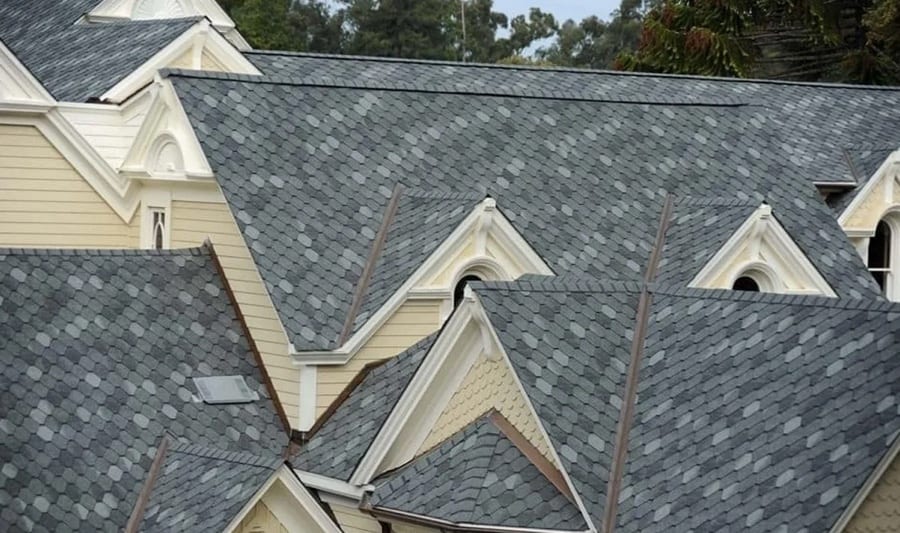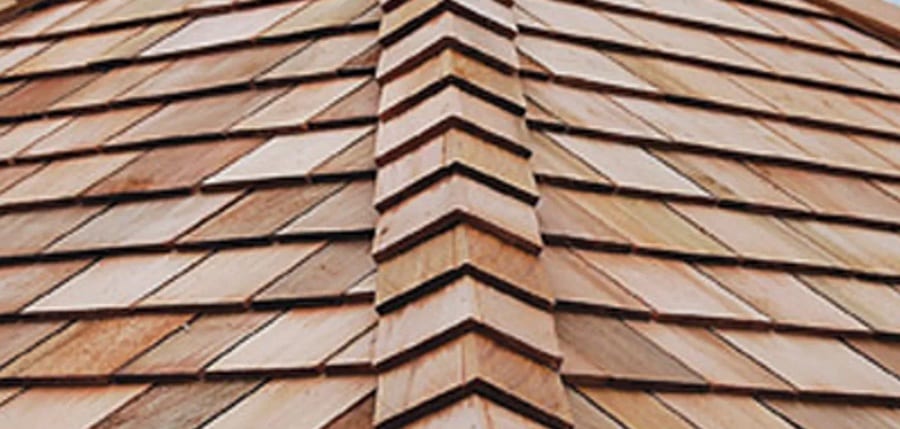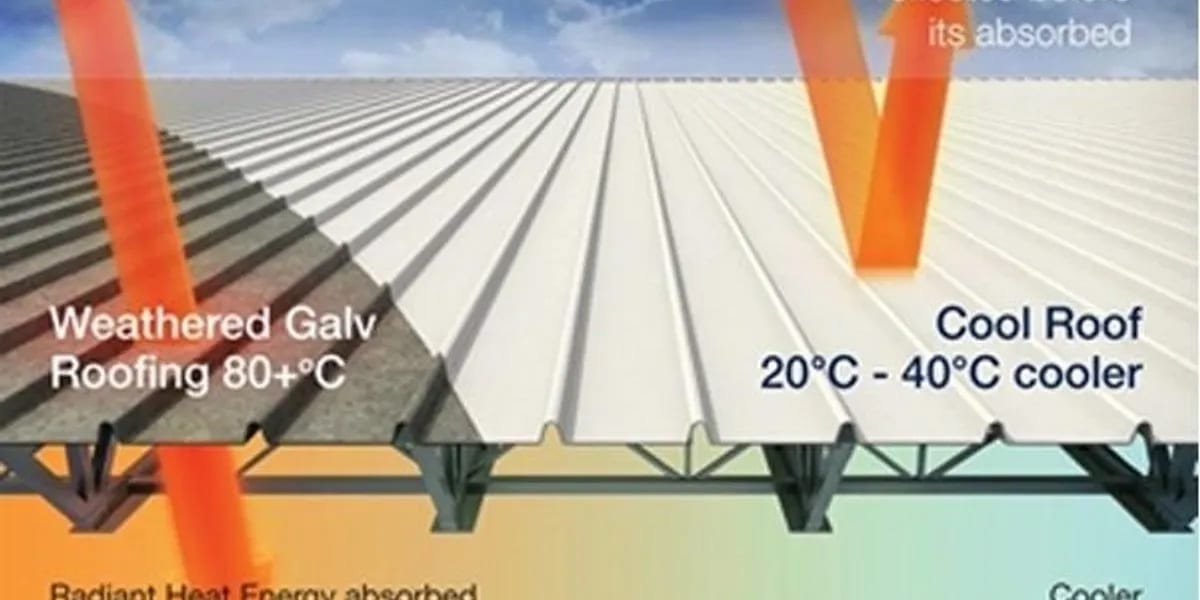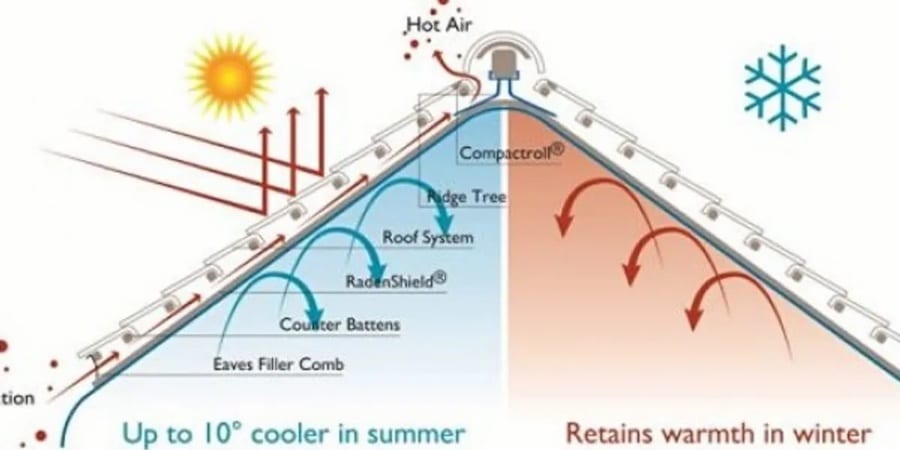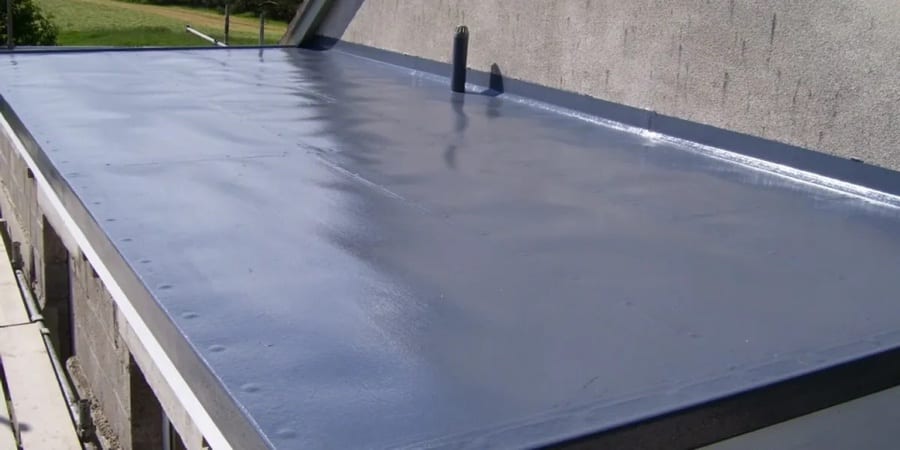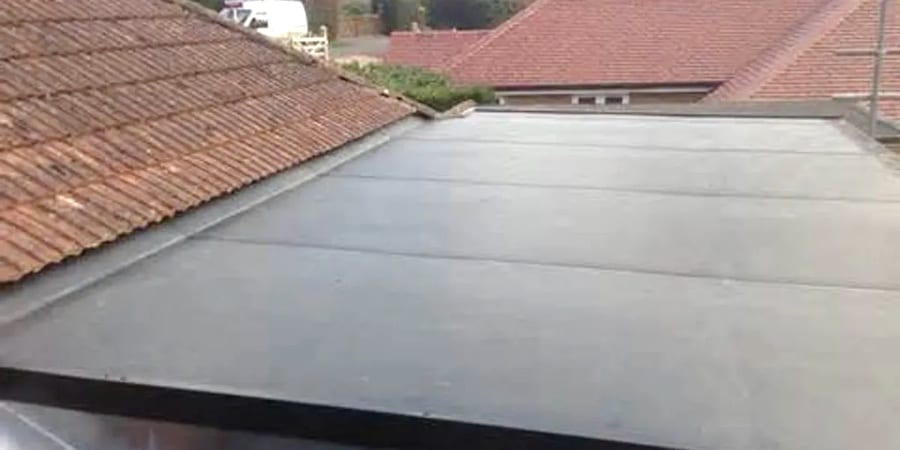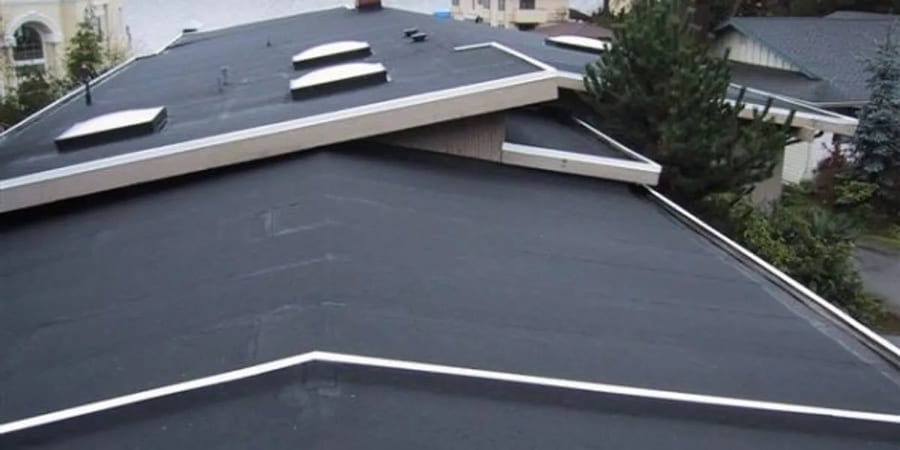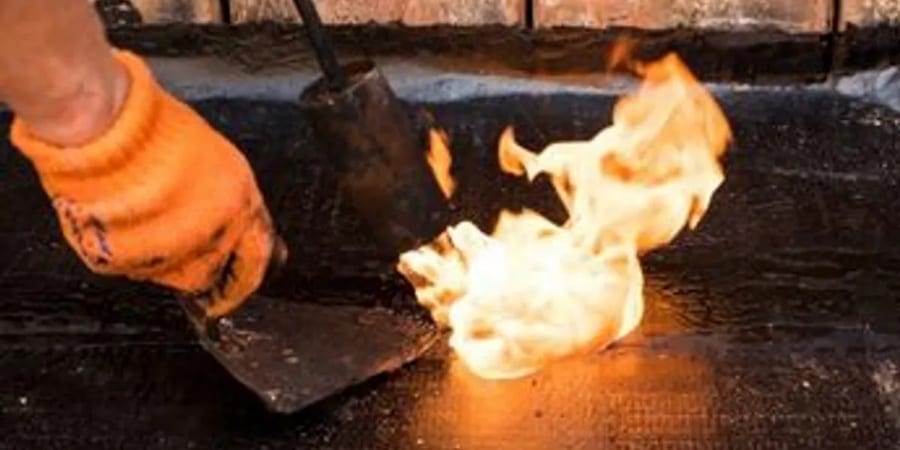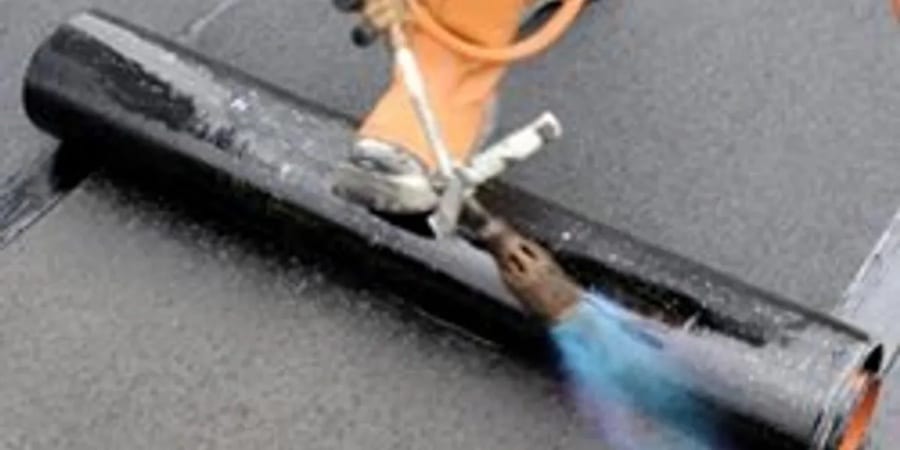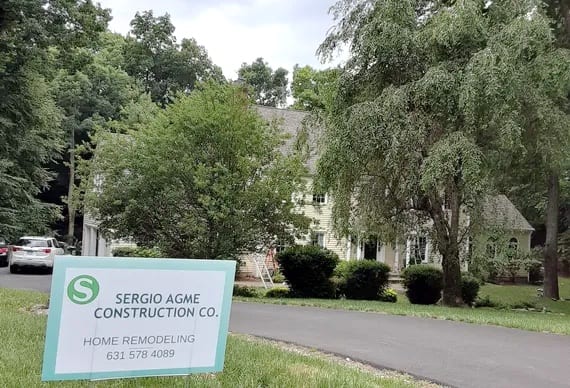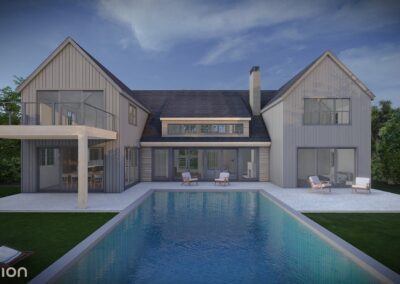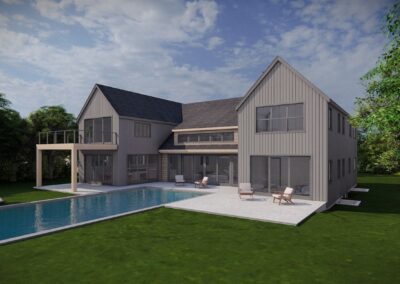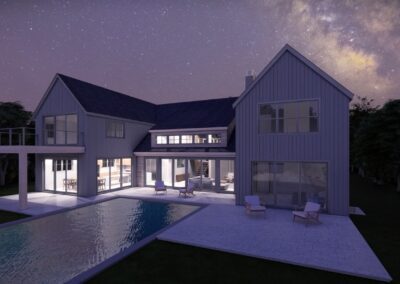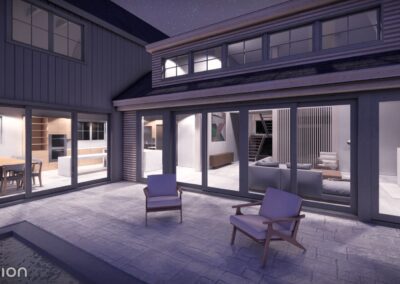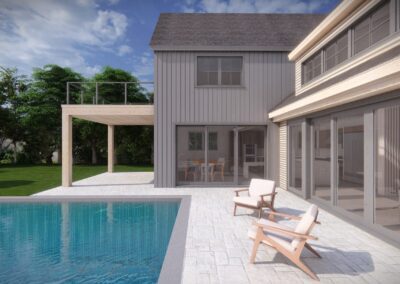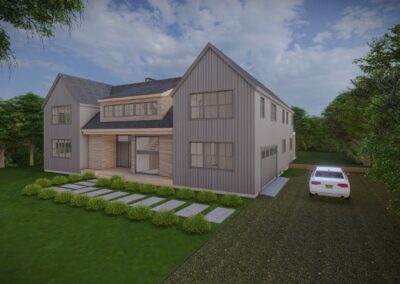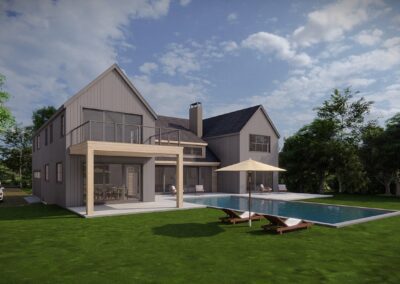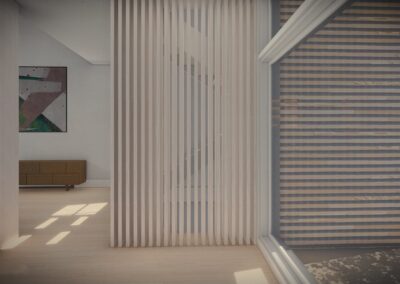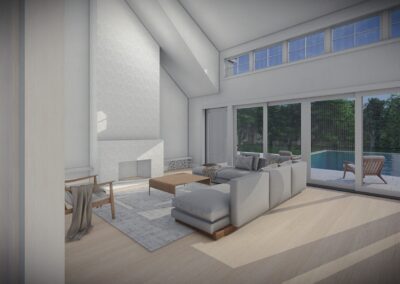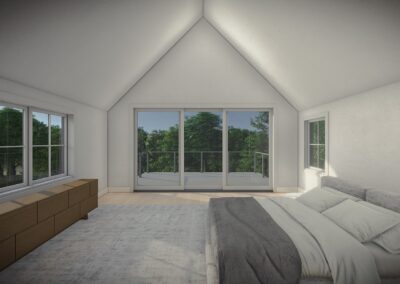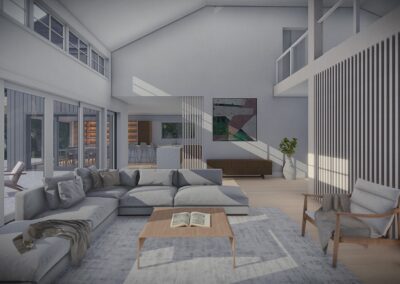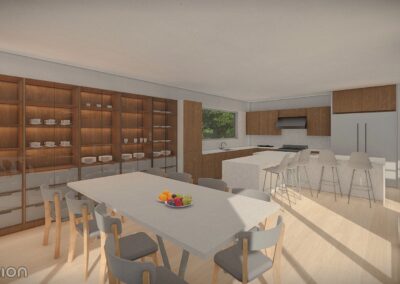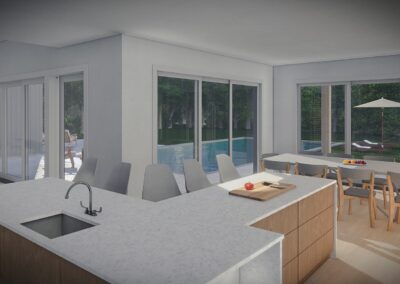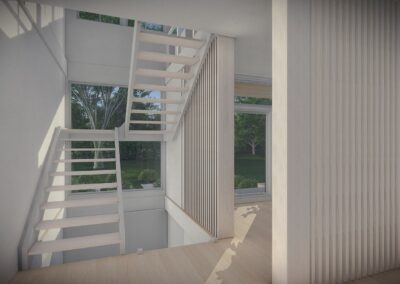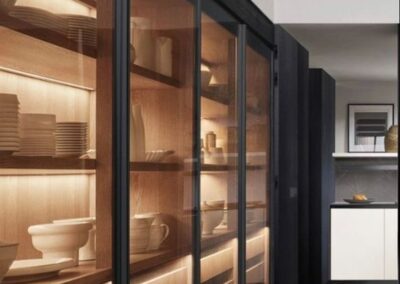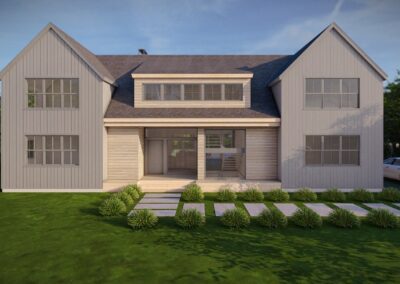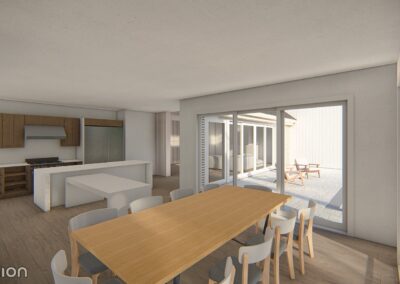Asphalt Shingles
Asphalt roofing is the number one utilized roofing product on homes in America today.
With recent technological advances asphalt shingles offer the best warranties at an affordable price. Most asphalt or composition shingles now carry a limited lifetime 50 year material warranty. Asphalt shingles are comprised of a fiberglass mat which is completely covered in asphalt and covered with special granules which provide coloring and shadowing.
We proudly install; Pabco, IKO, Malarkey, GAF, CertainTeed and Owens Corning shingles. Ask about our exclusive extended system warranties for your upcoming project.
We work with a variety of roofing materials, including
Our Roofing Process Delivers Guaranteed Quality
Roofing Contractors are not all alike. You will find many roofers who install the same roofing products, but you need to look closer at the values and experience and make an informed decision. We understand that you need a contractor who is going to install your new roof correctly the first time and be around after the sale to warranty any future issues that may arise.
With a full line of residential and commercial roofing solutions, Sergio's Roofing has the experience and expertise to solve almost any roofing problem you might have.
Wood Shake Roofing
Wood shake roofing is an incredible looking roofing system. It’s important to make sure the quality of shakes you are getting is top notch as there are many products out there that do not meet the standard of shake roofs in past generations. That is where Sergio’s Roofing comes in, as we only install premium grade wood shakes that will last decades. If you are in need of a new wood shake roof or wood shake roof repair contact us today for expert and knowledgeable consulting and estimating. granules which provide coloring and shadowing.
What’s a Cool Roof System?
A cool roof is one that has been designed to reflect more sunlight and absorb less heat than a standard roof. Cool roofs can be made of a highly reflective type of paint, a sheet covering, or highly reflective tiles or shingles. Nearly any type of building can benefit from a cool roof, but consider the climate and other factors before deciding to install one.
Just as wearing light-colored clothing can help keep you cool on a sunny day, cool roofs material that is designed to reflect more sunlight and absorb less heat than a standard roof. Cool roofs can be made of a highly reflective type of paint, a sheet covering, or highly reflective tiles or shingles. Standard or dark roofs can reach temperatures of 150°F or more in the summer sun. A cool roof under the same conditions could stay more than 50°F cooler and save energy and money by using less air conditioning.
Types of Roofs and How They Can Be Made Cool
There are many types of roof systems available, but the surface exposed to the sun is the one that determines if a roof is cool or not. You can usually make a new or existing roof cool by selecting the appropriate surface.
Cool roof coatings are white or special reflective pigments that reflect sunlight. Coatings are like very thick paints that can protect the roof surface from ultra-violet (UV) light and chemical damage, and some offer water protection and restorative features. Products are available for most roof types.
Shingle roofs consist of overlapping panels made from a variety of materials such as fiberglass asphalt, wood, polymers, or metals.
How they can be made cool: Buy cool asphalt shingles, which use specially coated granules that provide better solar reflectance. (Coating existing asphalt shingles to make them cool, however, is not normally recommended or approved by shingle manufacturers.) Other roof shingles can be coated at the factory or in the field to make them more reflective.
Tile roofs can be made of clay, slate, or concrete. Tiles can be glazed to provide waterproofing or coated to provide customized colors and surface properties.
How they can be made cool: Some are naturally reflective enough to achieve cool roof standards, and surface treatments can transform tiles with low solar reflectance into cool roof tiles.
Benefits of Cool Roof System
A cool roof can benefit a building and its occupants by:
- Reducing energy bills by decreasing air conditioning needs
- Improving indoor comfort for spaces that are not air conditioned, such as garages or covered patios
- Decreasing roof temperature, which may extend roof service life
Beyond the building itself, cool roofs can also benefit the environment, especially when many buildings in a community have them. Cool roofs can:
Reduce local air temperatures (sometimes referred to as the urban heat island effect)
Lower peak electricity demand, which can help prevent power outages
Reduce power plant emissions, including carbon dioxide, sulfur dioxide, nitrous oxides, and mercury, by reducing cooling energy use in buildings.
Just as wearing light-colored clothing can help keep you cool on a sunny day, cool roofs material that is designed to reflect more sunlight and absorb less heat than a standard roof. Cool roofs can be made of a highly reflective type of paint, a sheet covering, or highly reflective tiles or shingles. Standard or dark roofs can reach temperatures of 150°F or more in the summer sun. A cool roof under the same conditions could stay more than 50°F cooler and save energy and money by using less air conditioning.
Metal roofs are available with natural metallic finishes, oven-baked paint finishes, or granular coated surfaces.
How they can be made cool: Unpainted metals are typically good solar reflectors but poor thermal emitters, so they rarely satisfy low slope cool roof requirements. Painting a metal roof can increase its solar reflectance and thermal emittance, allowing it to achieve cool roof status. Alternatively, you can apply cool reflective coatings.
Low Slope/Flat Roofing
Low-Slope Roof System Types
There are different types of low-slope and flat roof systems that have been used in the past and are still part of low-slope roofing and they include:
Built-Up Roof
- Historically connected and performing roofing type
- Layers of felt roofing material (tar paper)
- Mopped on roof with hot asphalt or bitumen (coal-tar pitch) for build up that is impermeable to water
- Surfaced with a gravel coat that is embedded in another coat of hot bitumen
- Environmental issues as well as cost factors because of fluctuating of crude oil prices
Modified Bitumen
- Historically performing roof type
- Chemically modified asphalt for flexibility
- Fabricated over fiberglass matting or weighty polyester for added strength
- Coordinates well with extended insulation for increased performance
- Flexible and strong
- Wide range of surfacing selections, including cool roofing
- Wide range of methods of application
- Watertight in its design and composition
- Warranties available
- Overall competitiveness in cost
- Can be packaged as a rated system (fire, wind, hail)
Single Ply
- Can be manufactured as an entire membrane and installed as single ply
- Usually heat welded as single ply material through thermoplastic membrane technology
- White in appearance for heat reflection and high Energy Star ratings
- Durable roof seaming through welding process
- Coordinates well with extended insulation for increased performance
- Environmentally friendly from manufacture to installation to disposal
- Fastest growing low-sloped roofing type
- Proven performance
- Wide range of application procedures
- Wide range of top-coating selections, including cool roofing
- Watertight in its design and composition
- Flexible and strong
- Overall competitiveness in cost
- Can be part of a fire rated system
Quality Flat Roofs & Low Slope Roofing
Roofs that are almost flat and mostly found on commercial buildings are referred to as low slope roofing or simply a flat roof. You can also find this kind of roof in residential buildings and homes. However, the term flat roof is slightly inaccurate considering the fact that roofs are not supposed to be flat. Instead, they are supposed to have some sort of allowances to allow water drainage.
Unfortunately, since there are not so many residential homes with these kinds of roofs, most roofers are not well trained to work on them. This is the primary reason why you need to give Sergio’s Roofing a call to work on your flat roof. The crew is well trained with a comprehensive knowledge on the unique and technical challenges these type roof can present.
Flat Roof/Low Slope Roofing Challenges
There are so many technical challenges that come with a flat roofing system. Some of these challenges are about areas that are leaking and how to find these areas. It is important to note that a commercial roof is not supposed to have areas of stagnating water. Standing water on a roof is not a good sign and can mainly be as a result of a drooping roof decking or poor drain planning.
In order to ensure that we have served our clients beyond their expectations, our sales representatives come up with a thorough plan of action unique to each project. In this plan, the representative has explained exhaustively all the options available as far as flat/low slope roofing is concerned. This is in regard to the flat roof material choices and the types of flat roofs suitable to your construction or restoration needs. As Longmont roofers, we have a goal to ensure that we always supersede our client’s expectations. Give Sergio’s Roofing a call today and get your free assessment and quote!
Save Money by Fixing Your Roof Now
Time and again, property owners have tried to convince their clients that it is not worthy repairing their flat roof system. We at Sergio’s Roofing refute this claim and we can confirm to you that a repair done by a respectable company is going to save you a lot of time, money and stress. All you need is people who are experienced with limitless knowledge about the challenges of flat roofs.
Torch Down Roofing
What is a Torch Down Roof System?
Torch down roofing material is an asphalt compound called bitumen. It’s then modified with rubber or plastic to add strength, and enable the material to expand and contract without causing cracks or melting.
The modified bitumen torch down means it’s then heated to the point that it seals and provides high tolerance to heat, cold and moisture. There are even different types of torch down roofing, including two layer roofing and three later roofing.
The name comes from the fact that the method used to heat the product to seal it is by using an open flame propane torch to get the material to the right heat and adhere it to the building. By doing a “torch down”installation ,also called torch on installation , the material is melted to the sheathing and then is sealed. This creates a secure attachment between the material and the flat roof, and ensures a waterproof seal to prevent leaks.
Providing Protection
After all, a flat roof is likely to hold water from rain and snow for a longer period of time than a heavily sloped roof. Snow will stay on the roof until it melts, but water-resistant torch down roofing provides the protection your roof needs.
Torch Down Repair Roofer
If you do have issues, start by identifying the problem. If you have a watermark or stain in the ceiling, it’s best to contact a professional to work with you to handle a full roof inspection. An expert in torch down roofing will be able to identify sources of water leaks, but can also pick out potential weak spots or faults in a torch down rubber roof that you may not be able to identify on your own.
Issues that could require repair include:
- Fine cracks in the surface of the roof. While they don’t look like much, it may be best to handle a repair before they get worse.
- Deep cracks in the surface of the roof. These may require more than a simple repair job.
- Shrinkage of the installation products. It could be that the fiberglass or bitumen has shrunk, is pulling away from the flashing, or is even pulling off the wall.
- Seams that have separated. They could appear because the installation wasn’t done properly, but could also be due to wear and tear on the roof.
Identifying Torch Down Roofing Issues
A torch down roofing contractor will be able to identify issues and potential issues, and provide advice on the best method for repairing whatever is wrong with the roof. The roofer will then prepare the surface for repair work, including sealing any cracks or holes, and handling bitumen repair with an open-flame propane torch.
Torch Down Installation Roofer
Torch down roofing is a specific type of roof covering suited for flat roofs and slightly sloped roofs. Due to the technique required for torch down roof installation , it’s best to contact experts like Sergio’s Roofing to ensure the job is done right.
After all, if flat roof installation is done properly, torch down roofing can last up to 20 years, handling all the elements of a New York climate: heat and cold, rain and snow.
New Construction Projects in Contract
Look out as Sergio Agme Construction has new projects on the way! People know and love how SAC provides clients a complete service package, and guides them through every step of the building process, from design to material discussion, budget to site arrangement.
Ridgefield, CT
Home Exterior Make-over
In contract
5,500 sqf
Bridgeport, CT
Existing Marina Renovation
New Floating docks and Fingers
New Office Building
10.000 sqf roofing and walls
Greenport, NY
Tinny House Project
Beautiful Greenport Home Total Gut Project
Sag Harbor, NY
Home Interior Make-over
5.5 million
Sag Harbor, NY
Beautiful Sag Harbor Home
New Pool
New Garage Addition
Southampton, NY
Beautiful Southampton Home
Interior Renovation
Car Port & Attached Storage Addition

